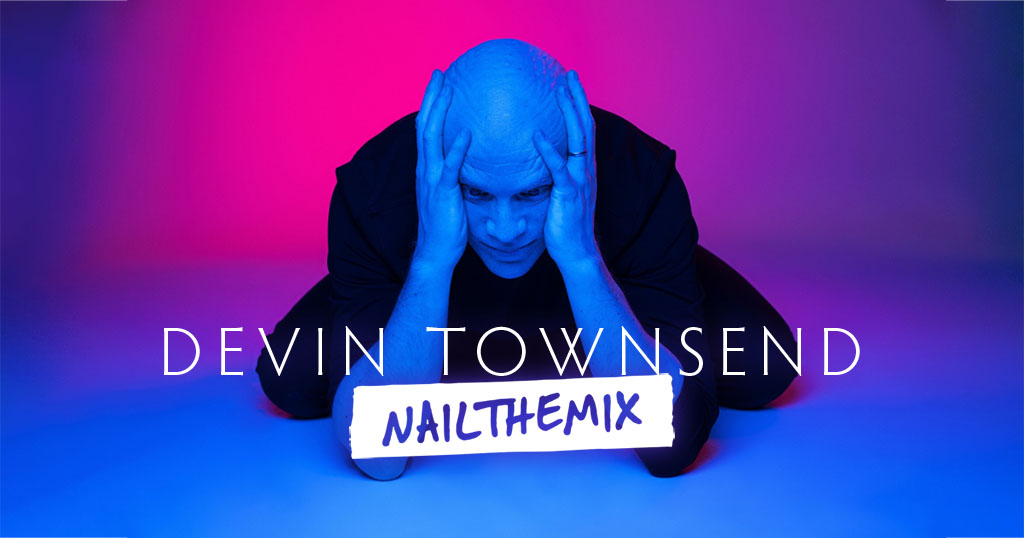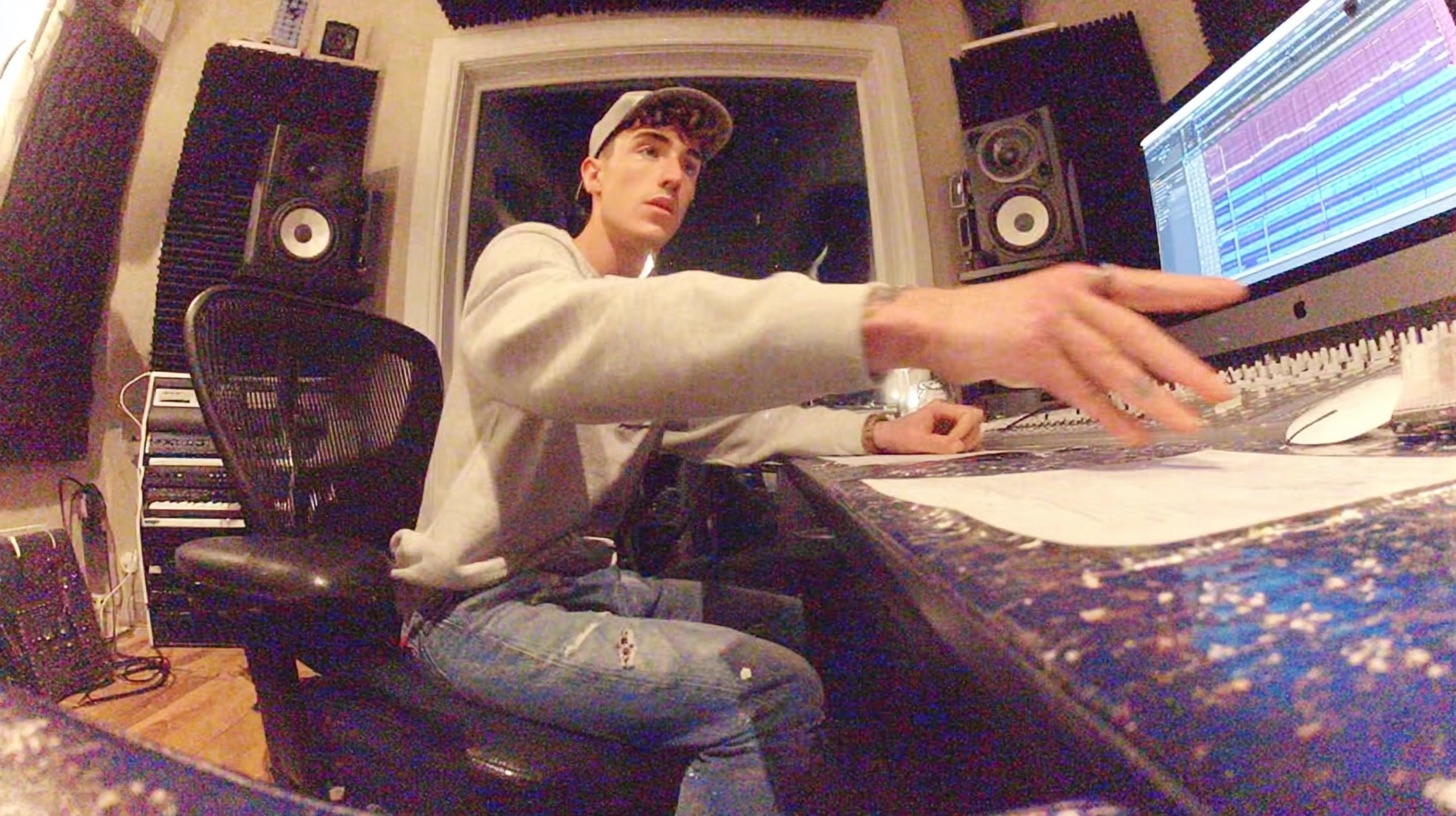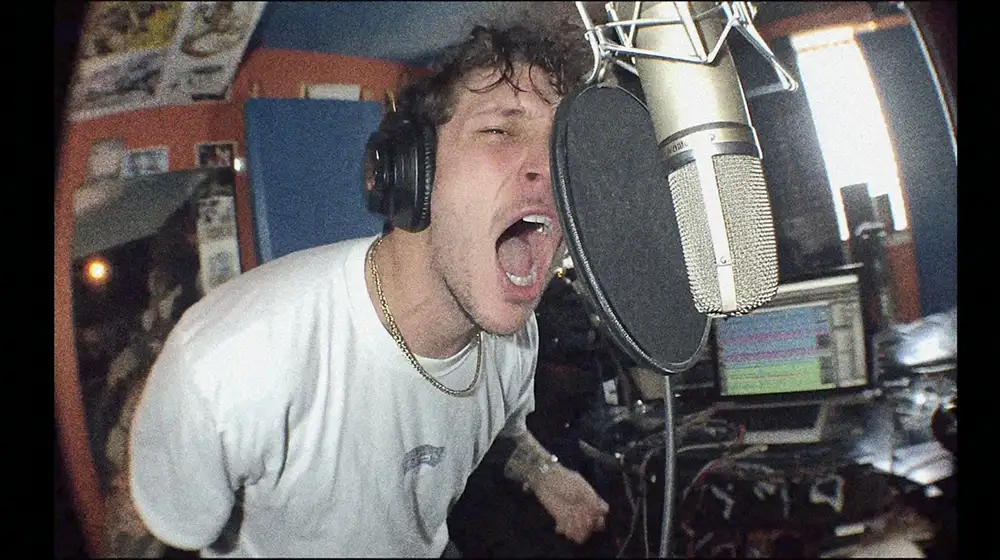
Mixing Amaranthe’s Massive Vocal Stacks with Jacob Hansen
Nail The Mix Staff
Let’s talk about Amaranthe. Their sound is defined by a massive wall of vocals—clean male, clean female, and growls all layered into a polished, powerful force. With dozens of vocal tracks in a single session, it’s incredibly easy to turn a mix into a cluttered, overcooked mess. So how do you get that huge, bright, and in-your-face vocal sound without going too far?
We got to watch a master at work when legendary producer Jacob Hansen (Volbeat, Epica) mixed Amaranthe’s “365” for a Nail The Mix session. He dropped some serious knowledge on how he crafts those pristine vocal effects. Forget just slapping a reverb on a track; his approach is all about control, dynamics, and some clever routing. Let’s break down his techniques.
Tame Your Effects with Pre-EQ
One of the biggest takeaways from watching Jacob work is his use of pre-EQ on his effect sends. Before a signal even hits a reverb or delay plugin, he shapes it. This is a pro move that keeps your effects from muddying up the main vocal.
Cleaning Up the Reverb Send
When sending the lead vocal to his main reverb, the first thing in the chain is an EQ. Jacob carves out the low end with a high-pass filter.
Why is this so critical? Reverbs can easily build up low-frequency mud, which competes with the bass, kick drum, and the fundamental warmth of the vocal itself. By cutting the lows before they enter the reverb, you get all the spaciousness and air from the effect without any of the boxy or rumbly baggage. It keeps the reverb shimmering around the vocal, not underneath it. This is one of the most fundamental EQ strategies for mixing modern metal you can apply.
Shaping the Delay Sends
Jacob applies a similar philosophy to his delay sends, but he takes it a step further. He uses an EQ to apply both a low-cut and a high-cut. This “band-passing” effect essentially focuses the delay signal into the midrange.
The result? The delays sit perfectly behind the main vocal. The dry vocal retains all its high-end clarity and “air,” while the repeats have a slightly darker, more filtered tone. This helps the listener distinguish between the lead vocal and its echo, preventing the mix from sounding washed out and cluttered.
Create Space with Dynamic Delays (Ducking)
Here’s the real magic in Jacob’s vocal chain. We all know how delays can step on the lead vocal, especially during fast or dense lyrical passages. Jacob’s solution is to make his delays dynamic using a technique called ducking, or sidechain compression.
The Ducking Setup Explained
The setup is simple but incredibly effective. On each of his delay return tracks (the aux tracks where the delay plugins live), he places a compressor. Then, he sets the compressor’s sidechain input to be triggered by the dry lead vocal track.
Here’s what happens:
- When Elize Ryd is singing, her vocal signal triggers the compressor on the delay track.
- The compressor turns the volume of the delay down.
- As soon as she stops singing at the end of a phrase, the dry signal disappears, the compressor releases, and the delay tail swells up to fill the empty space.
This simple trick keeps the delays completely out of the way of the lead vocal, ensuring every word is clear and upfront. Then, you get this awesome “bloom” of the effect in the gaps, making the whole production sound bigger and more intentional. It’s one of those metal compression secrets that goes way beyond just controlling dynamics.
Jacob’s Triple-Threat Delay Stack
Jacob doesn’t just use one ducked delay; he layers three distinct types to create a rich, complex vocal soundscape.
Delay 1: The Modulated Sync’d Delay
This is his workhorse delay. It’s a standard delay synced to the tempo of the song, but with a bit of modulation (like a slow vibrato or chorus) on the repeats. This adds a little movement and character to the echoes.
Delay 2: The Mono-to-Stereo Tape Delay
Next up is a shorter, tape-style delay meant to emulate a classic Roland Space Echo. Interestingly, he uses a mono plugin for the delay itself, then follows it with a stereo chorus/spreader plugin. This creates a cool effect where the delay starts in the center and then widens out, adding texture and stereo width without being distracting.
Delay 3: The “Echo Boy” Ambient Delay
For the epic, atmospheric tails, Jacob turns to the Soundtoys Echo Boy. This is a slower, more ambient delay set up with some built-in reverb on the repeats. This is the effect that creates those huge, washed-out tails that you hear swelling up after a big vocal line.
Add Polish with a Stereo Spreader
For the final layer of polish, Jacob uses one more effects bus. He once again EQs the send—cutting lows and highs—and feeds it into a subtle stereo spreader. He described it as a “pit shifting thing, some chorusy thing.” This effect isn’t meant to be heard on its own but adds a final bit of width and chorusing movement to the entire vocal stack, helping to glue everything together and give it that professional sheen.
The Pro Move: Always Have a “Throw Delay” Ready
Here’s a workflow hack that separates the pros from the rest. Jacob always sets up a “throw delay” bus at the beginning of his mix session. This is a longer, more obvious delay that’s ready to go at a moment’s notice.
He might not even use it in the final mix, but it’s there if inspiration strikes. If he hears a specific word or phrase that he wants to accentuate with a dramatic echo, he doesn’t have to stop, create a new track, and load a plugin. He can just reach for the send fader for that bus and automate a quick “throw.” It’s all about staying in the creative zone.
See It All in Action
Reading about these techniques is a great start, but watching a world-class producer like Jacob Hansen actually dial them in, blend the different effects, and make them sit in a dense metal mix is a total game-changer.
Amaranthe on Nail The Mix
Jacob Hansen mixes "365"
Get the Session
On Nail The Mix, you can do exactly that. We’re giving you access to the full 8-hour mixing session for Amaranthe’s “365”. You’ll get to watch Jacob explain every single move and, even better, you get the original multi-tracks to download and practice on yourself. It’s the ultimate way to level up your productions and learn the techniques that will help you unlock your sound and mix modern metal beyond presets.
Get a new set of multi-tracks every month from a world-class artist, a livestream with the producer who mixed it, 100+ tutorials, our exclusive plugins and more
Get Started for $1






